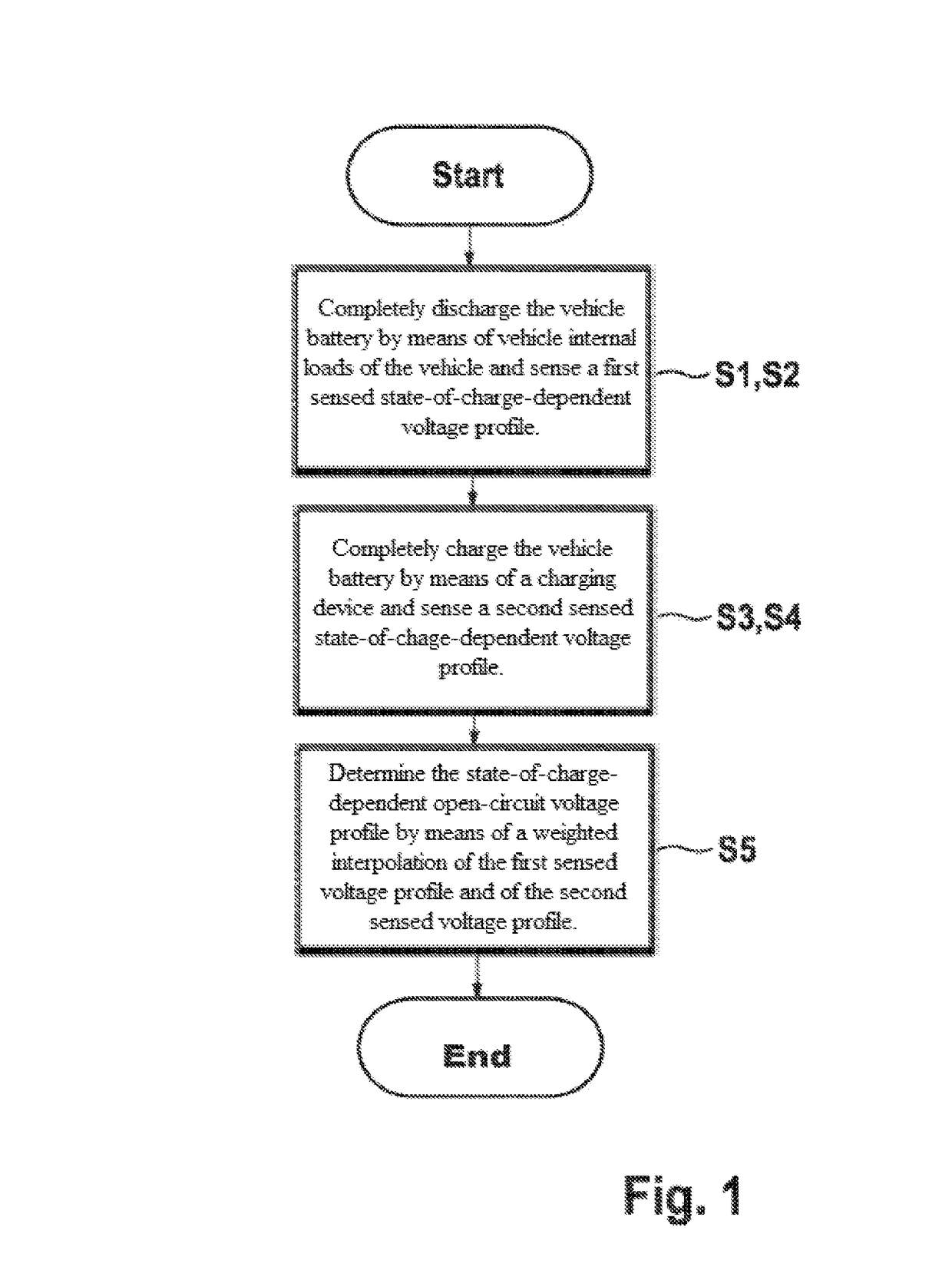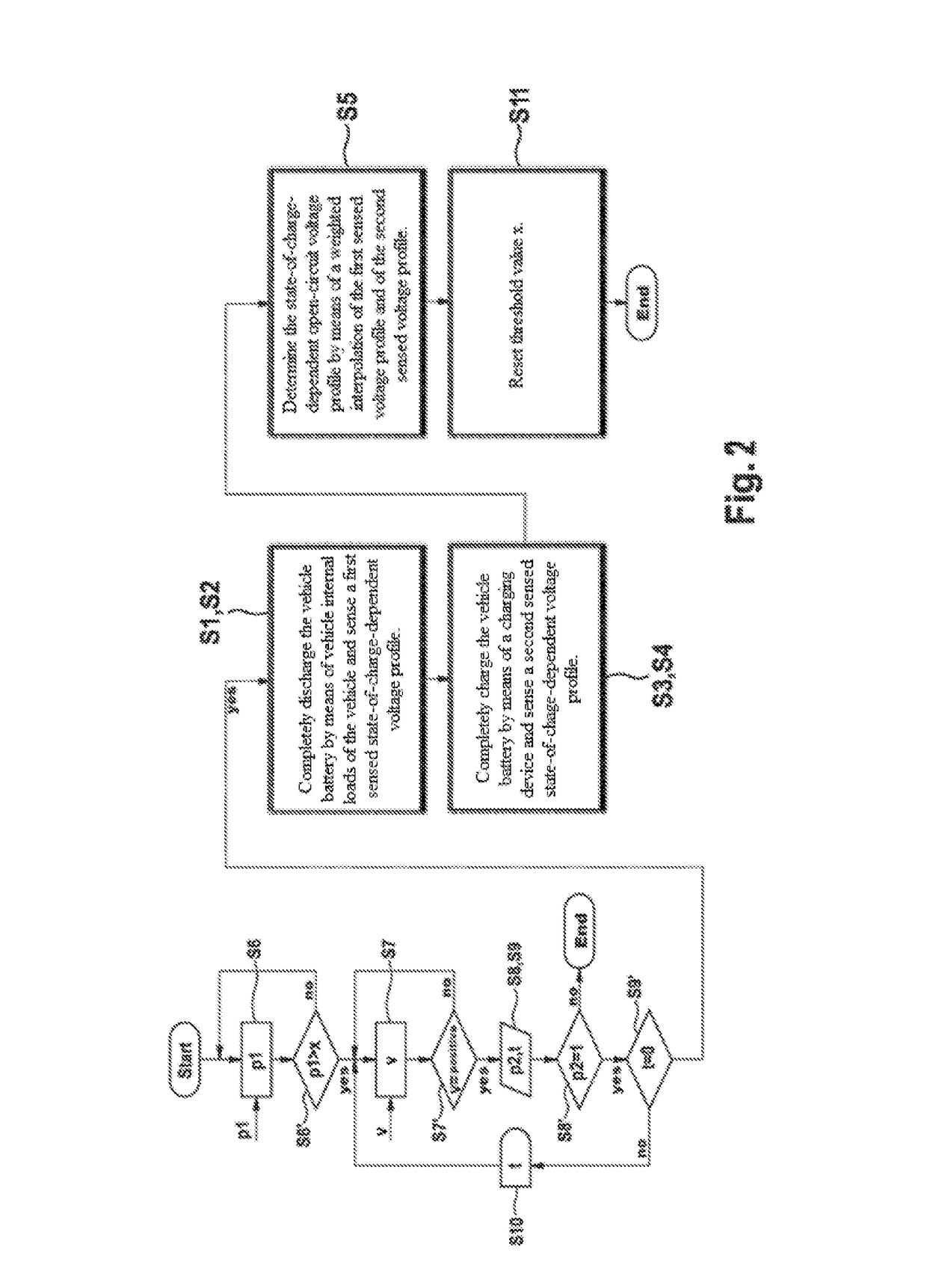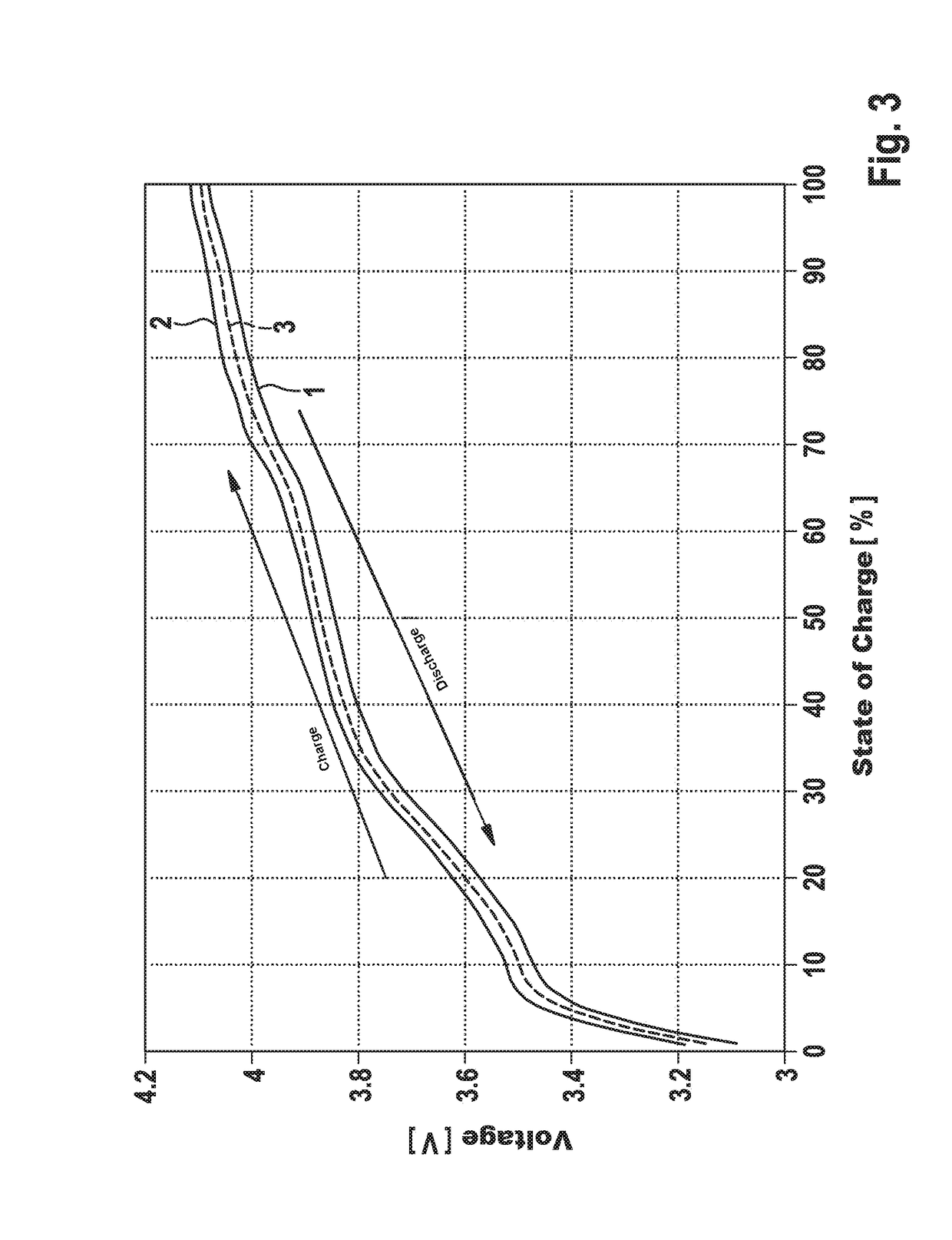Method and device for determining an open-circuit voltage profile of a vehicle battery, dependent on a state of charge
a technology of open-circuit voltage and vehicle battery, applied in the direction of battery/fuel cell control arrangement, instruments, transportation and packaging, etc., can solve the problems of vehicle battery chemical and electrical properties change, vehicle battery ageing, etc., and achieve the effect of more precise determination
- Summary
- Abstract
- Description
- Claims
- Application Information
AI Technical Summary
Benefits of technology
Problems solved by technology
Method used
Image
Examples
first embodiment
[0023]FIG. 1 shows a flow diagram of the method according to the invention in a The method can, for example, be started by means of a start signal of an independent vehicle system of by means of a request by a user.
[0024]In a first procedural step S1, a complete discharging of the vehicle battery occurs by means of vehicle-internal loads of the vehicle. Such components of the vehicle are designated as vehicle-internal loads, which are also available during a user operation of the vehicle. Examples of such components include, for example, a heater (if applicable compensated by the simultaneous operation of a cooling system), fans, pumps, electric machines or similar components. In this regard, those loads are to be preferred which are characterized by a constant current consumption.
[0025]When completely discharging the vehicle battery by vehicle-internal loads of the vehicle in the first procedural step S1, it is advantageous if the discharging is carried out with discharging curren...
second embodiment
[0036]In this second embodiment, a first decision parameter p1 is however queried in an introductory procedural step S6. The first decision parameter p1 can be provided by other systems located in the vehicle or by the battery management system itself. Examples for the first decision parameter p1 are a current datum, the mileage on the vehicle, a charge throughput of the vehicle battery or an energy throughput of the vehicle battery. The queried first decision parameter p1 is compared to a predefined threshold value x in procedural step S6′. This threshold value x can be predefined in the battery management system during the course of a manufacturer or user configuration. If the obtained decision parameter p1 is greater than the threshold value x, the method is then continued. If the obtained decision parameter p1 is smaller than the threshold value x, the method then branches back to the introductory procedural step S6, wherein said step S6 is again carried out.
[0037]In the second ...
PUM
 Login to View More
Login to View More Abstract
Description
Claims
Application Information
 Login to View More
Login to View More - R&D
- Intellectual Property
- Life Sciences
- Materials
- Tech Scout
- Unparalleled Data Quality
- Higher Quality Content
- 60% Fewer Hallucinations
Browse by: Latest US Patents, China's latest patents, Technical Efficacy Thesaurus, Application Domain, Technology Topic, Popular Technical Reports.
© 2025 PatSnap. All rights reserved.Legal|Privacy policy|Modern Slavery Act Transparency Statement|Sitemap|About US| Contact US: help@patsnap.com



